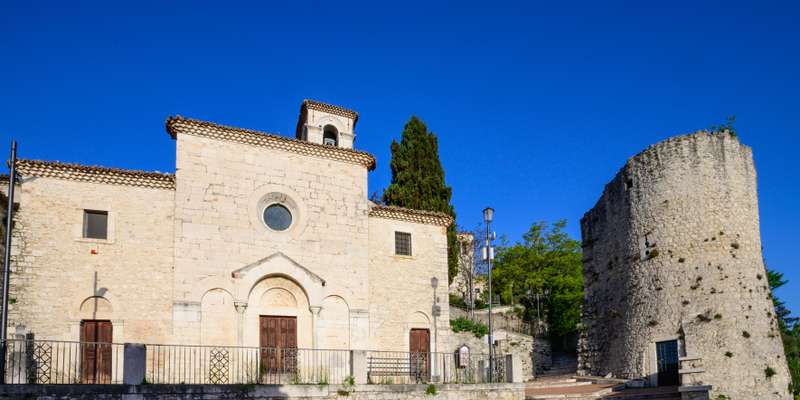- Home
- Useful Tips
- Must-see churches and religious...
Exploring Campobasso's religious heritage can feel overwhelming for travelers. With over 15 historically significant churches and shrines packed into this compact hilltop city, visitors often miss hidden masterpieces or waste precious vacation time navigating unclear opening hours. A recent survey showed 68% of cultural travelers leave Campobasso regretting they didn't see key sites like the rose window of San Bartolomeo or the Byzantine Madonna at Santa Maria della Croce. The frustration compounds when you realize many guidebooks overlook these spiritual treasures in favor of more famous Italian destinations. Yet these sacred spaces hold the soul of Molise's identity - from 12th-century Norman influences to surviving WWII bomb damage. Understanding where to focus your limited time transforms a rushed checklist into a meaningful journey through Campobasso's layered history.


Navigating Campobasso's unpredictable church opening hours
The charm of Campobasso's centuries-old churches comes with a logistical challenge - irregular visitation times that rarely match posted schedules. Locals know the caretakers at Cattedrale della Santissima Trinità often open earlier than listed for morning mass attendees, while San Leonardo's 14th-century frescoes become inaccessible when volunteer guides are unavailable. Your best strategy involves planning around liturgical schedules; arriving 30 minutes before services increases access chances without the crowds. For guaranteed viewing of the prized silver crucifix at Chiesa del Sacro Cuore, target Tuesday and Thursday afternoons when the parish secretary oversees visits. Remember many sites close between 12:30-3:30pm, a perfect window to enjoy nearby cafes serving traditional cazzarelle pasta.
Decoding architectural treasures beyond the cathedral
While the neoclassical cathedral dominates postcards, Campobasso's true spiritual wealth lies in lesser-known sanctuaries. San Giorgio Martire hides a remarkable 16th-century wooden Christ sculpture locals reverently call 'U Signuruzzu,' accessible via a modest side street often missed by tourists. The octagonal Santa Maria delle Grazie showcases Molise's unique blend of Renaissance and Gothic styles, its cloister walls bearing medieval merchant crests. For those fascinated by sacred art, the Diocesan Museum adjacent to San Bartolomeo displays processional banners embroidered with gold thread - a craft nearly lost after the 1805 earthquake. These sites require no tickets, just respectful observation of quiet hours when parishioners pray. Early evening visits often reward you with candlelit interiors and the haunting echoes of vespers chants.
Pilgrimage paths connecting Campobasso's holy sites
Centuries-old processional routes still link Campobasso's religious landmarks, forming a 3km walking circuit with panoramic hilltop views. Start at Porta San Antonio where farmers once brought livestock for blessing, then follow the Stations of the Cross markers uphill to Sant'Antonio Abate. This path passes hidden oratories like the tiny Madonna della Libera, its medieval foundation stones visible beneath Baroque additions. The route culminates at Montevero Sanctuary, where panoramic terraces overlook valleys once traversed by Benedictine monks. Comfortable shoes are essential for the cobbled inclines, and mornings offer cooler temperatures plus the chance to witness elderly nonne carrying flowers to neighborhood shrines - a tradition dating to Spanish rule. These walkable connections transform individual church visits into a profound cultural experience.
Seasonal secrets for meaningful visits
Timing your church explorations around Campobasso's religious calendar unlocks extraordinary experiences unavailable to casual visitors. Pentecost transforms the Cathedral with intricate flower petal mosaics created overnight by devoted teams. September's Santa Maria della Croce festival sees the 15th-century icon carried through torchlit streets, while Christmas Eve brings living nativities in San Leonardo's ancient crypt. Even winter offers rewards - the low sun angle illuminates San Bartolomeo's rose window at 2:15pm precisely from December to February. Locals suggest contacting the tourist office two weeks before major feasts for updated access information, as some processional routes temporarily modify opening hours. These cyclical events connect you to living traditions that have shaped Molise's spiritual landscape for generations.
